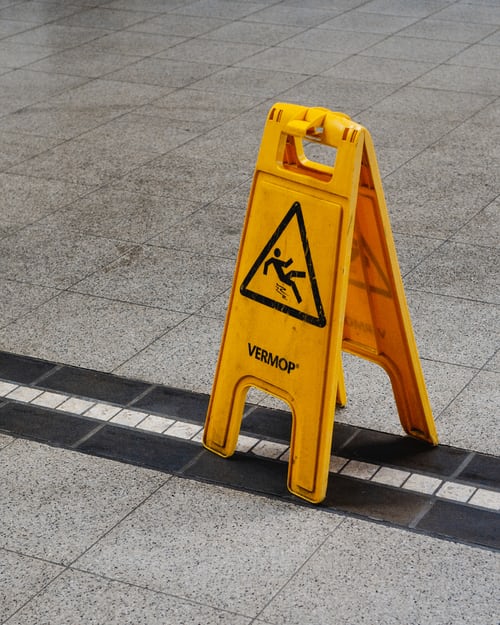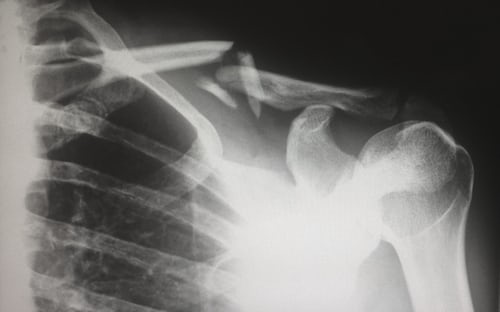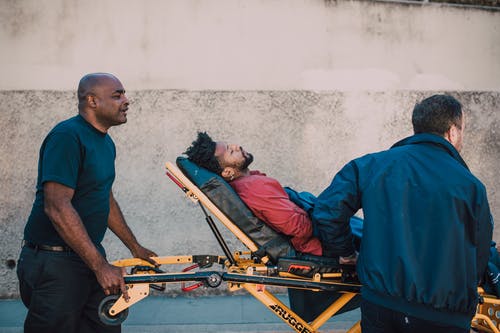Negligence is a concept that is at the heart of all personal injury claims. In order for a defendant to be found liable for damages they must have either:
- Caused your injuries through their own actions
OR - Failed to act appropriately to prevent your injuries
In slip and fall cases, negligence is defined as a property owner’s failure to act reasonably to ensure the safety and security of visitors. You will need to show that the store met the four elements of negligence to win your slip and fall claim.
How To Prove Negligence in a Slip and Fall Claim
To prove negligence in a slip and fall claim, you will need to demonstrate the four elements of negligence were met. These four elements include:
- Business owner owed a duty of care.
- They breached the duty of car.
- The breach resulted in your slip and fall.
- You have damages, or injuries, from the slip and fall.
To receive compensation for your slip and fall claim, you will need to demonstrate that these four elements were met. This can be done through your evidence.

Evidence to Prove Negligence in a Slip and Fall Claim
To prove that the store’s negligence is responsible for your slip and fall, you will need to provide proper evidence. Some important pieces of evidence can include:
- Witness statements of the slip and fall
- Videos or photos of your slip and fall
- Accident report from the business where the slip and fall occurred
- Copies of medical bills
- Pay stubs to support missed wages
- Receipts for any other out-of-pocket costs
- Doctor’s notes, test results, x-rays, or any other medical records
These are just some examples of different evidence you may need. The more evidence you can gather to support your slip and fall claim, the better the chance you have of proving negligence and winning your claim.
How to Determine a Property Owner’s Reasonableness
In order for a property owner to be found negligent, they must have not have acted reasonably to ensure your safety. Reasonableness in the eyes of the law means specific things:
- Maintaining the property and its condition through regular monitoring and upkeep
- Taking corrective action in a timely manner to deal with any potential hazards
- Notifying or alerting visitors to hazards until they can be corrected or addressed
- Laying out their property design and its features to promote safety
- Ensuring all employees know the proper procedures for keeping visitors safe and preventing injuries
Property owners cannot anticipate or effectively counter all potential hazards, but it is an owner’s responsibility to try. If the owner knew about the hazard and had sufficient time to correct the problem but failed to, then owner did not act reasonably. Likewise, if the owner or his or her employees created the hazard, then the owner may be determined unreasonable in the eyes of the law.

Examples of Negligence in Slip and Fall Accidents
Slip and fall accidents can happen under a variety of circumstances. Knowing when the owner was truly negligent can be confusing. If the owner fails to meet his or her basic responsibilities though, then you may have a legitimate slip and fall claim.
- Failure to Maintain
- Inspection – If a property owner has no regular inspection or maintenance schedule and you are injured because of poor conditions, then the owner is negligent. The same can be true if employees fail to follow the regular inspection and maintenance schedule.
- Repairs – Hazards that are present for a long time without being addressed are another example of negligence from failure to maintain the property. Concrete stairs that are chipped or uneven, torn carpets, and lumps or other breaks in the floor are a few examples of disrepair that can cause injuries.
- Lighting – If light bulbs burn out and poor lighting conditions cause your injuries, the owner may be negligent if he or she knew about the problem but did nothing to correct it.
- Floor Plans – The design or layout is not safe, then the owner can be held negligent. It’s the owner’s responsibility to determine and set up a safe design. If the owner should have reasonably anticipated the design could be a problem, then he or she can be found negligent.
- Failure to Warn
- Caution Signs – If the owner or his or her employees knew the floor was wet or slippery but didn’t put up “caution” signs, then the owner is negligent. Signs may note things like work being done in the area or the need to watch your step because of uneven ground. Any area of potential hazard must be marked with caution signs to avoid negligence.
- Cordoning Off Dangerous Areas – Poor conditions may be obvious, like rickety stairs or uneven floors, but if you have a legitimate reason to be in the area, then the owner is negligent. Dangerous areas must be cordoned off and visitors should have no reason to be in those areas.
How to Determine Liability
In determining liability, the property owner’s insurance company and the court will look at your actions and level of “reasonableness” as well as the owner’s. The property owner may try to prove you were careless in your own actions and therefore responsible for your injuries. Your actions may have caused or contributed to your injuries if:
- You were not paying attention,
- You didn’t heed caution signs the owner placed,
- You noticed a hazard but didn’t attempt to avoid it
In any of these instances, you may be partially or entirely liable for your injuries. Most states allow shared liability for injuries and still permit you to receive compensation for damages.
If you were reasonably caution in your own actions and still suffered injuries due to the action or inaction of the property owner, then the owner was negligent and therefore liable. Proving this can be challenging though.

To prove liability, you must show one of the following:
- The owner caused the hazardous conditions
- The owner’s employees caused the hazard
- The owner knew of and failed to warn you about the hazard
- The owner knew about and failed to correct the hazardous conditions
The circumstances of the slip and fall determine who is liable, but the evidence you put forth to prove liability is essential in showing the owner was unreasonable and negligent. Both of these concepts are central to winning a personal injury claim.
Get Help Proving Negligence In Your Slip and Fall Claim
It can be difficult proving negligence on your own, especially while trying to heal from your injuries. Consider seeking the help of a slip and fall attorney. A lawyer can help you gather the necessary evidence and documentation needed to prove the business was negligent, resulting in your slip and fall. To get connected with a slip and fall attorney who takes cases in your area, complete the Free Case Evaluation on this page today.